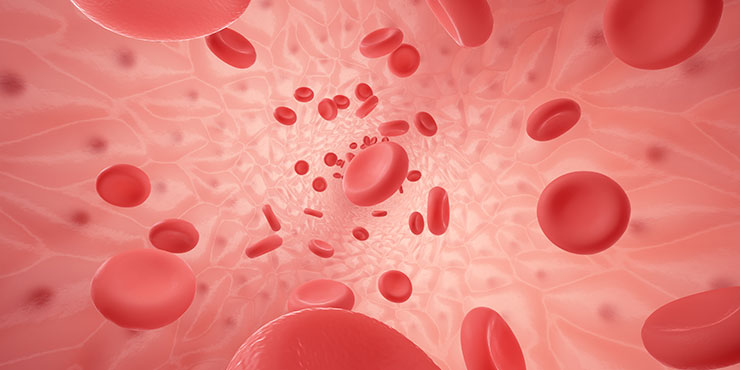Reasons doctors may choose cord blood
When your doctor searches the NMDP Registry, he or she will choose the best cell source for you. That may be marrow or peripheral blood from an adult donor or it may be a cord blood unit. A doctor might choose cord blood because of some of the ways it differs from marrow or peripheral blood.
More tolerant matching
A close match between the patient and the donor or cord blood unit can improve a patient’s outcome after transplant. Even though a closely matched cord blood unit is preferred, clinical studies suggest the match may not have to be as close as is needed for marrow or peripheral blood transplants. If you have an uncommon tissue type, your doctor may not find a closely matched adult donor for you. However, a cord blood unit may be an option.
More quickly available
Cord blood units are stored and ready to use. It can take two months or more to find an unrelated marrow or peripheral blood donor. A cord blood unit can be selected and delivered to the transplant center in less than two weeks. Your doctor may choose cord blood if you need a transplant quickly.
Less graft-versus-host disease
Graft-versus-host disease (GVHD) is a common complication after an allogeneic transplant (which uses cells from a family member, unrelated donor or cord blood unit). GVHD can range from mild to life-threatening. Studies have found that after a cord blood transplant, fewer patients get GVHD than after marrow or peripheral blood transplants. Patients in the studies who did get GVHD after a cord blood transplant tended to get less severe cases.
Reasons doctors may not choose cord blood
There are also reasons a doctor may choose not to use cord blood for a transplant. These include:
*There may not be enough blood-forming cells in a cord blood unit for the size of the patient.
*It usually takes longer for cord blood cells to engraft (begin to grow and create new blood cells and an immune system). Until the cells engraft, the patient is at a high risk for infection.
*Patients cannot get backup cells from the same cord blood unit. If a patient’s transplanted marrow or peripheral blood cells do not engraft or the patient relapses, the patient may be able to get a second donation from the same adult donor. After a cord blood transplant, this option is not available. However, doctors may be able to use a different cord blood unit or a backup adult donor instead.
*Cord blood is a newer treatment approach for transplant. Doctors do not have as much information about patients’ long-term results after cord blood transplants as they do for marrow transplants.
Cord blood transplants also have all the same risks as marrow and peripheral blood transplants. The risk of infection may be higher after a cord blood transplant because of the longer time to engraft. The risk of GVHD may be lower, but the risk is still there.
Diseases Treated with Stem Cells
Although not all diseases treated with stem cells have been treated specifically with cord blood stem cells, doctors have been using cord blood in lifesaving treatments since 1988. And recently, scientists have discovered some amazing new possibilities for treating diseases and injuries in the future.
Current Stem Cell Applications
· Bone Marrow Failure Disorders
o Amegakaryocytosis
o Aplastic Anemia (Severe)
o Blackfan-Diamond Anemia
o Congenital Cytopenia*
o Congenital Dyserythropoietic Anemia
o Dyskeratosis Congenita
o Fanconi Anemia
o Paroxysmal Nocturnal Hemoglobinuria (PNH)
o Pure Red Cell Aplasia
· Hemoblobinopathies
o Beta Thalassemia Major
o Sickle Cell Disease
· Histiocytic Disorders
o Familial Erythrophagocytic Lymphohistiocytosis
o Hemophagocytosis
o Langerhans’ Cell Histiocytosis (Histiocytosis X)
· Inherited Immune System Disorders
o Chronic Granulomatous Disease
o Congenital Neutropenia
o Leukocyte Adhesion Deficiency
o Severe Combined Immunodeficiencies (SCID) including:
§ Adenosine Deaminase Deficiency*
§ Bare Lymphocyte Syndrome
§ Chediak-Higashi Syndrome*
§ Kostmann Syndrome
§ Omenn Syndrome
§ Purine Nucleoside Phosphorylase Deficiency
§ Reticular Dysgenesis
o Wiskott-Aldrich Syndrome
o X-Linked Lymphoproliferative Disorder
· Inherited Metabolic Disorders
o Adrenoleukodystrophy
o Fucosidosis
o Gaucher Disease*
o Hunter Syndrome (MPS-II)
o Hurler Syndrome (MPS-IH)
o Krabbe Disease
o Lesch-Nyhan Syndrome
o Mannosidosis*
o Maroteaux-Lamy Syndrome (MPS-VI)
o Metachromatic Leukodystrophy
o Mucolipidosis II (I-cell Disease)*
o Neuronal Ceroid Lipofuscinosis (Batten Disease)*
o Niemann-Pick Disease*
o Sandhoff Disease*
o Sanfilippo Syndrome (MPS-III)
o Scheie Syndrome (MPS-IS)
o Sly Syndrome
o Tay Sachs*
o Wolman Disease
· Leukemias and Lymphomas
o Acute Biphenotypic Leukemia*
o Acute Lymphocytic Leukemia (ALL)
o Acute Myelogenous Leukemia (AML)
o Acute Undifferentiated Leukemia*
o Adult T Cell Leukemia/Lymphoma
o Chronic Lymphocytic Leukemia (CLL)
o Chronic Myelogenous Leukemia (CML)
o Hodgkin’s Lymphoma
o Juvenile Chronic Myelogenous Leukemia (JCML)
o Juvenile Myelomonocytic Leukemia (JMML)
o Myeloid/Natural Killer (NK) Cell Precursor Acute Leukemia
o Non-Hodgkin’s Lymphoma
o Polymphocytic Leukemia
· Myelodysplastic/Myeloproliferative Disorders
o Acute Myelofibrosis*
o Agnogenic Myeloid Metaplasia (Myelofibrosis)*
o Amyloidosis
o Chronic Myelomonocytic Leukemia (CMML)
o Essential Thrombocythemia*
o Polycythemia Vera*
o Refractory Anemias (RA) including:
§ Refractory Anemia with Excess Blasts (RAEB)
§ Refractory Anemia with Excess Blasts in Transformation (RAEB-T)
§ Refractory Anemia with Ringed Sideroblasts (RARS)
· Plasma Cell Disorders
o Multiple Myeloma
o Plasma Cell Leukemia
o Waldenstrom’s Macroglobulinemia
o Other Inherited Disorders
o Cartilage-Hair Hypoplasia
o Congenital Erythropoietic Porphyria (Gunther Disease)
o DiGeorge Syndrome
o Osteopetrosis
· Other Malignancies
o Brain Tumors**
o Ewing Sarcoma*
o Neuroblastoma
o Ovarian Cancer**
o Renal Cell Carcinoma**
o Rhabdomyosarcoma
o Small Cell Lung Cancer**
o Testicular Cancer**
o Thymoma (Thymic Carcinoma)
· Other
o Chronic Active Epstein Barr
o Evans Syndrome
o Multiple Sclerosis**
o Rheumatoid Arthritis**
o Systemic Lupus Erythematosus**
o Thymic Dysplasia
*Refer to http://www.clinicaltrials.gov/for additional information
**Not routinely eligible for participation in CBR’s Designated Transplant Program Source: Medical literature and http://www.clinicaltrials.gov/
Emerging Stem Cell Applications
· Diabetes
· Heart Disease
· Liver Disease
· Muscular Dystrophy
· Parkinson’s Disease
· Spinal Cord Injury
· Stroke
